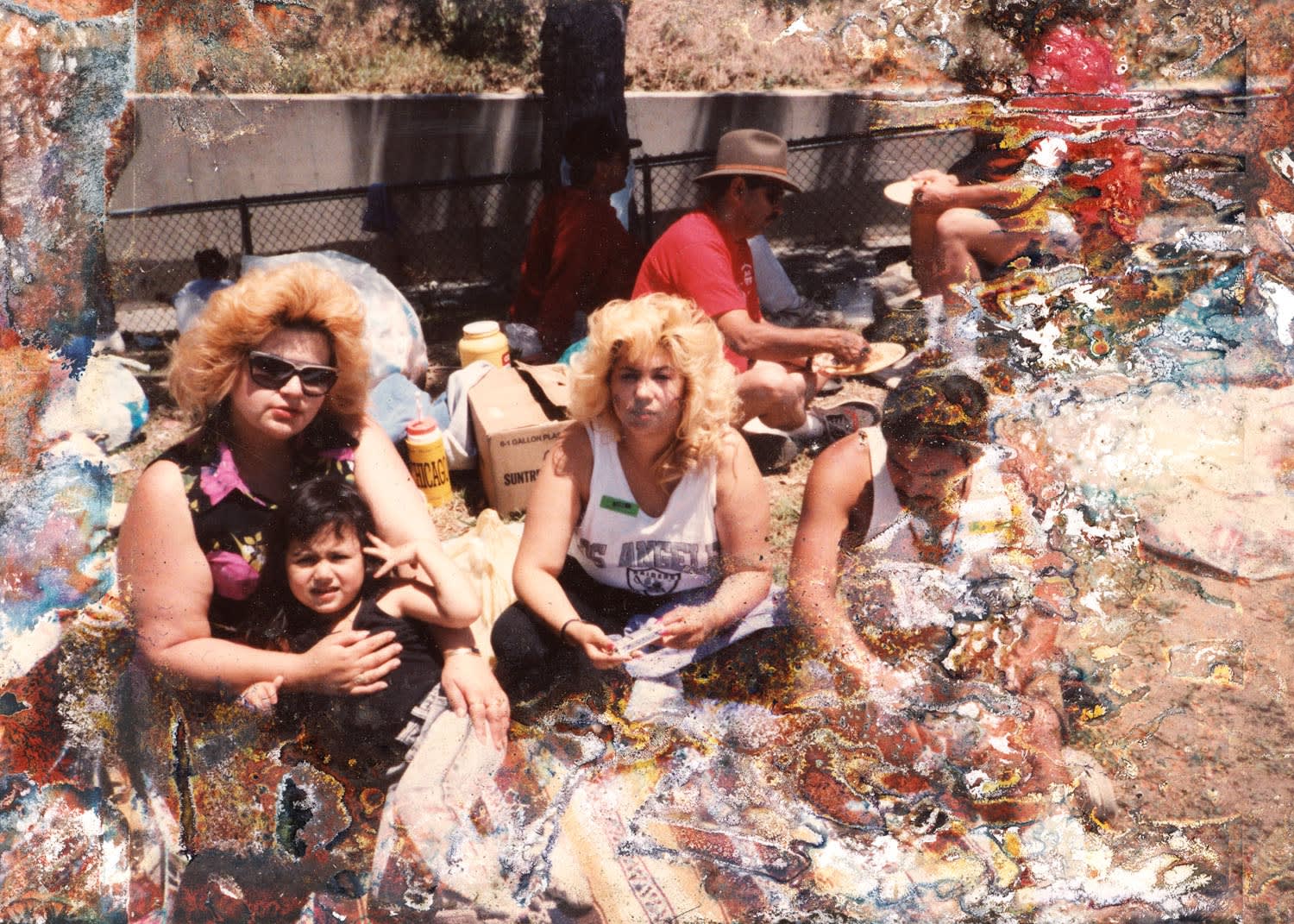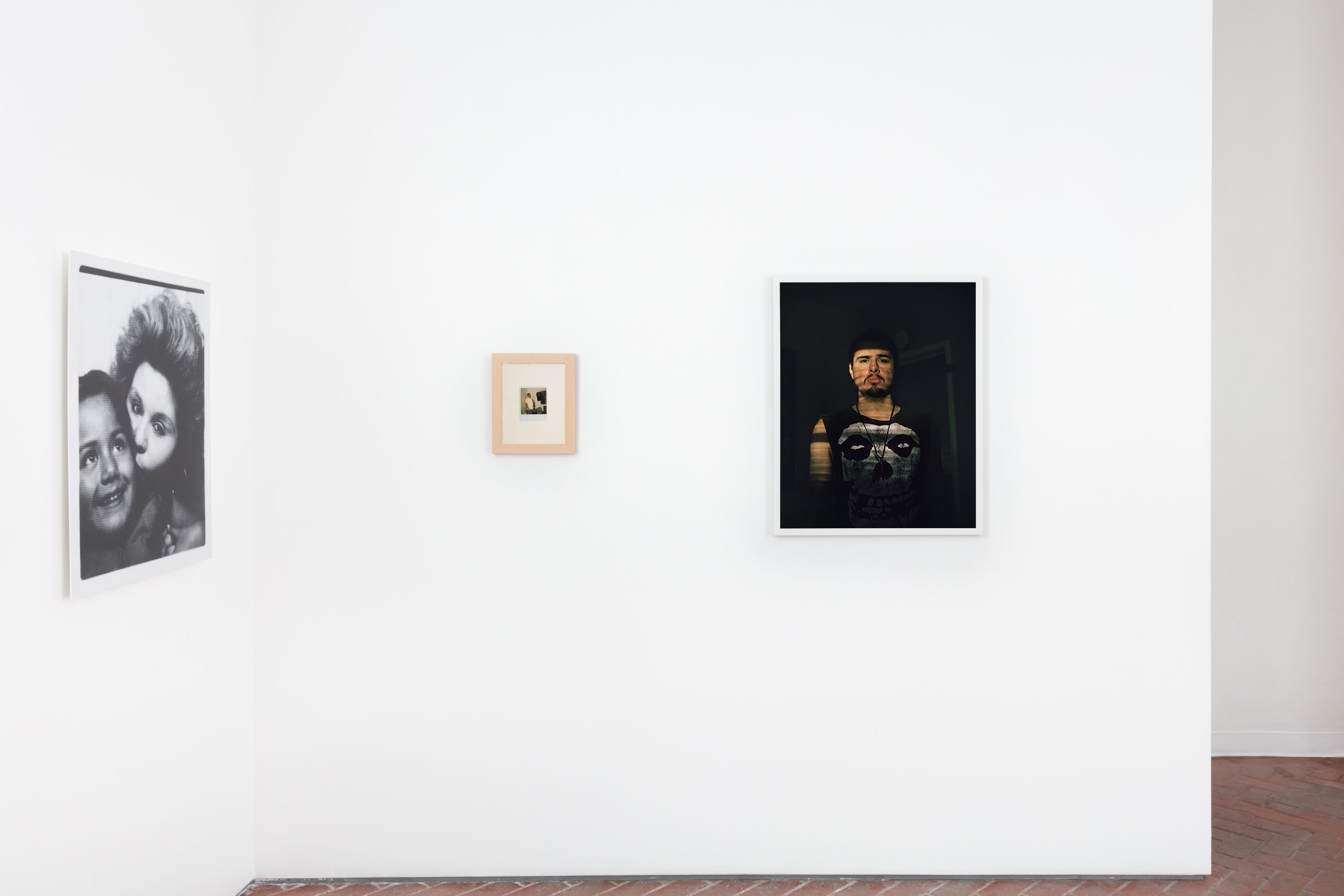Over the past few years, Star Montana has framed presentations of her photographs as chapters, arranging them into tightly conceived groupings that reveal something of the lives of her neighbors in East Los Angeles and chronicle the experiences of Montana’s family among them (most profoundly in a series exhibited at the Vincent Price Art Museum in Los Angeles in 2016 and revolving around the untimely death of the artist’s mother). Montana stays close to her subjects, and there is a mutuality of recognition. She images vulnerability in a way that remains resolutely personal even as she insists that such responses to poverty and disenfranchisement are collective and structural. Earlier black-and-white scenes of street life have more recently been abandoned for color portraits of single individuals, often imposing in scale, as befits the visualization of those who so fully occupy these representational frames.
For “By the rivers, I stood and stared into the Sun,” her first solo show at Shulamit Nazarian, Montana included one such portrait, Frankie, 2015, a head-on picture of her brother, bathed in gentle sunlight in an otherwise dark room. But she also brought forward a more recent dimension of her practice in aggregating not only images that she made but those that she had found: decades-old shots of relatives and self-portraits from photo booths and analog cameras, which constitute a makeshift and necessarily incomplete intergenerational matrilineal archive. Some recovered pictures were rematerialized as enlarged ink-jet prints on Sintra that hovered at a small but meaningful distance from the wall. Many preserved the exigencies of circumstance in these new iterations. Take Louisa, Cathy, and Little Star, 2019: The original snapshot’s water damage is exaggerated to the point of abstraction in the blown-up version. In Teenage Paula and Baby and Paula in Her Twenties, both 2019, the pliant folds of sustained handling, more brittle creases, and other surface incidents appear far more epic.

Star Montana, Louisa, Cathy, and Little Star, 2019, Inkjet print on Sintra, 25.75 x 36 inches
The exhibition reprised certain photos from an earlier show of the same name—as Nan Goldin has done with her work—making the point that an iterative and increasingly self-reflexive labor of selection needs to be sustained. This continuation is a process of mnemonic reconstruction with obvious analogies to other forms of care work and perhaps to devotional acts as well. (The effect was obtained at the level of the installation beyond the individual photos and the multiple temporalities they access.) Sunset (at the End of the Chihuahuan Desert), 2018, which occupied an even larger portion of a wall than it did previously, anchored the installation as a kind of talisman. Montana photographed the landscape near El Paso, looking past the daunting terrain capped by mountains and into the improbably lovely lavender cloud-streaked sky, west to California, where her family settled after leaving Mexico. Here, Large East LA Landscape, 2015, a scene surveying the environment from Boyle Heights to downtown Los Angeles—shrouded in marine haze—and the horizon beyond offers a none-too-subtle meditation on diaspora.
Montana appropriated the title of her show from a biblical passage about the waters of Babylon, where the weary sat and wept, remembering Zion. The whole room was encircled by ghosts, and the effect of layered asynchrony was all the more arresting owing to its punctuation by Montana’s own self-portraits. These show the artist as a child, grinning as her mom kisses her in Louisa and Star, and on her own in Star, both 2019, meeting the camera head-on in front of a deep-red backdrop, a presence befitting the stage that she has made for herself and others.

Star Montana: By the rivers, I stood and stared into Sun, installation view, Shulamit Nazarian, Los Angeles, May 15 – June 26, 2021.
